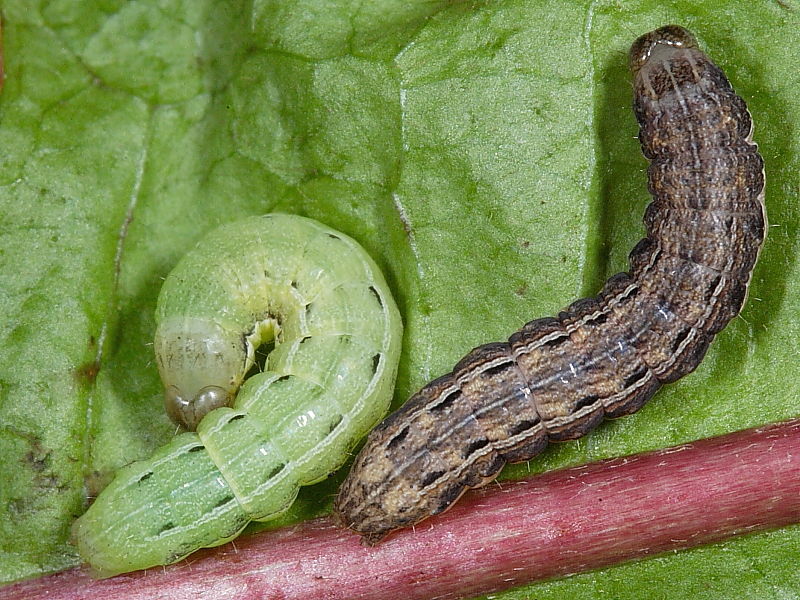
One of the most rewarding aspects of planting a pollinatorwildlife garden is watching the life cycle of caterpillars and the resulting butterflies play out in your backyard. Caterpillars rarely remain in outbreak numbers for more than two to three years.

This pattern has stripes or patches.
How long is the lifespan of a caterpillar. Some species exhibit extraordinarily long larval stages. For example the fox moth Macrothylacia rubi can remain a caterpillar for five years. The woolly bear Gynaephora groenlandica is the longevity champion remaining a caterpillar for up to 14 years.
Because of their arctic habitat these woolly caterpillars spend most of their lives frozen. Each year the larvae awaken to feed for. Many caterpillars are fully grown and ready to pupate within a few weeks of hatching from an egg such as the Painted Lady Vanessa cardui butterfly above left that only takes 4 weeks.
Others will over-winter in readiness to complete their growth and pupate the following spring such as the Fox Moth Macrothylacia rubi above right which remains a caterpillar for 11 months of the year from June to. Free photosCC-BY 20. The length of a caterpillars life varies tremendously and depends upon its species but most caterpillars stay in their larval stage for a few months before entering a cocoon.
They then emerge from this pupae stage as moths or butterflies. The life spans of some caterpillars deviate significantly from the norm. The caterpillar is the second phase in the life cycle of a butterfly.
The other phases include eggs first phase pupae third phase and the butterfly fourthfinal phase. The time taken for a butterflys life cycle to be completed could be anything from a single month to a complete year. How long a caterpillar stays a caterpillar depends on what species it is.
Some stay a caterpillar for thee to four weeks and some hibernate during the winter and stay a caterpillar for a year. Older caterpillars are approximately 15 to 20 inches long. Gypsy moth caterpillars do not produce a web which distinguishes it from web-making caterpillars such as the Eastern tent caterpillar Malacosoma americanum and the fall webworm Hyphantria cunea.
By the fourth instar the monarch caterpillar is between 13 and 25 mm in length. The front tentacles are now 5mm in length while those at the back are around 2 mm in length. White spots on the caterpillars prolegs the 5 pairs of false legs at the rear of the larvas body are more easily visible.
This stage lasts from 1 to 3 days. Butterflies and moths have four stages of life. Egg larva the caterpillar stage pupa the chrysalis phase in a butterflys development and adult.
It takes a Monarch butterfly just 28 to 32 days to complete its life cycle. Light temperature and humidity all play an important role in determining how long it will take a Monarch to complete its life cycle. Warmer temperatures so long as its not too warm higher.
Caterpillars rarely remain in outbreak numbers for more than two to three years. Factors which bring outbreaks to a close include parasitoids and disease. In some cases populations collapse because caterpillars starve to death either because trees are completely defoliated before the caterpillars are fully grown or because the quality of host leaves declines to the point where they are no longer palatable.
After weeks of feasting the host plants often milkweed the caterpillars will pupate and turn into a hard shell called a chrysalis. Yes it is not a cocoon which is actually formed by moths. 10 - 16 days in general and for some species of butterfly they can live as long as 6 - 10 months.
It is known for its slow rate of development as its full caterpillar life cycle may extend up to 7 years with moulting occurring each spring. This species remains in a larval state for the vast majority of its life. It takes around 6 to 8 days for the eggs to hatch and then the development stage begins and this can last up to four weeks.
It is here they feed relentlessly on your plants. At the end of the growing season they burrow underground and are in the pupal stage over the winter. Caterpillar Larve The second stage is the caterpillar.
A caterpillar is sometimes called larve. A caterpillar is a long creature. It looks like a worm.
Most caterpillars have a cool pattern. This pattern has stripes or patches. The caterpillar is hungry once it has hatched.
It starts to eat leaves and flowers. It eats these all the time. It first eats the leaf that it was born on.
The total time that the butterfly stays in the caterpillar stage is about 2-5 weeks and varies based on the species and the growing conditions. It is believed that the caterpillar stage is the most dangerous in the life cycle of a butterfly as the mortality rates are very high. The average lifespan of a painted lady butterfly is just 2 weeks wherein the eggs stage will be for 3-5 days the caterpillar stage will be for 5-10 days then pupa will last for 7-10 days and after 2 weeks is the adult stage.
The longest lifespan is of a monarch butterfly. It is considered to be up to 12 months. One of the most rewarding aspects of planting a pollinatorwildlife garden is watching the life cycle of caterpillars and the resulting butterflies play out in your backyard.
I was lucky enough to bear witness to such a process involving the Spicebush Swallowtail over the past 6-8 months and fortunately for you I had my camera handy for most of it. In the summer adults live from 2 to 6 weeks in captivity and probably about that long in the wild. The ones that migrate live longer from August or September to about April although a lot die before this.